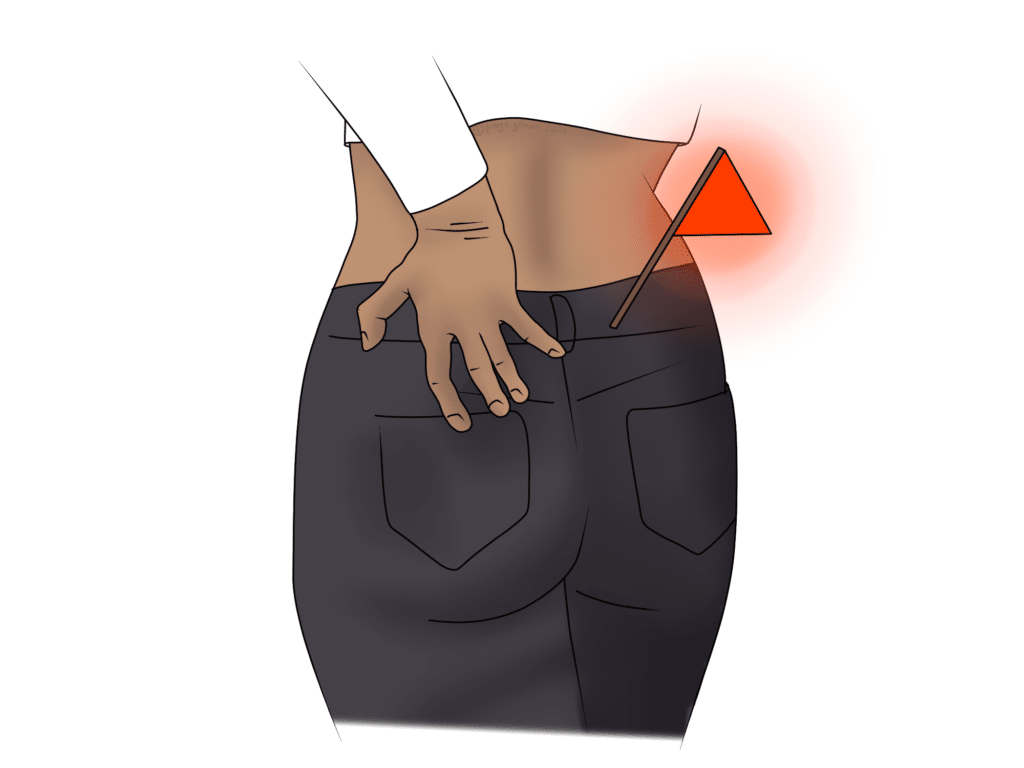

Red flags are indicators that something needs urgent intervention. We keep an eye out for them in every treatment, but they are also good for you to be aware of as the patient.

Your Lower Back Pain is considered within our remit if it fits the criteria for Non-Specific Lower Back Pain (NSLBP). This rules out infections, tumours, and fractures among other serious causes of lower back pain.
Note that although sciatica does not count as NSLBP, it is still within our remit. We can also help manage the symptoms of rheumatic conditions such as Ankylosing Spondylitis.
These flags indicate serious pathology and require immediate intervention. At their worst, if they are present in a patient who is attending treatment, they may require an ambulance to hospital.
Some of the most serious red flags that we see among LBP patients are those that indicate Cauda Equina Syndrome. This condition is caused by the compression of nerves at the bottom of the spinal cord. Compression here can quickly cause irreversible damage, which can cause permanent incontinence and paralysis. Any one of these flags is enough for you to consider urgent medical attention- call 111 if you are unsure.
It is possible to develop an infection in the spine or nearby. Osteomyelitis is a bacterial infection of bone, which can occur in the vertebrae. General symptoms of an infection in this area include:
We take a thorough case history at your first appointment, which is key to spotting flags like these. Red flags for infection are not just about the symptoms, but also underlying conditions and recent medical interventions. Bacteria reaches the spine via the blood, so infections elsewhere are relevant. You are more likely to develop an infection in the spine if you have:
Cancer is a very rare cause of lower back pain, and although some flags are relatively common (upper back pain, local tenderness, or pain aggravated by straining) other flags can be quite clear.
Spinal fractures can be surprisingly subtle, and should be considered after any trauma. For those with low bone density, such as people with osteoporosis or osteopenia, even minor trauma can lead to a fracture. This may present as seemingly typical lower back pain, and may not be discovered until it shows on a routine MRI or X-Ray years later. However, if you bring a fracture to clinic, we want to identify it before starting treatment and making it worse. We will look for:
If you are concerned about any of these symptoms for yourself, please call 111, your GP, or go to hospital. If you are confident that your back pain is mechanical, you are welcome to contact us via the link below to make your appointment.
For non-specific lower back pain, you can book an appointment online.